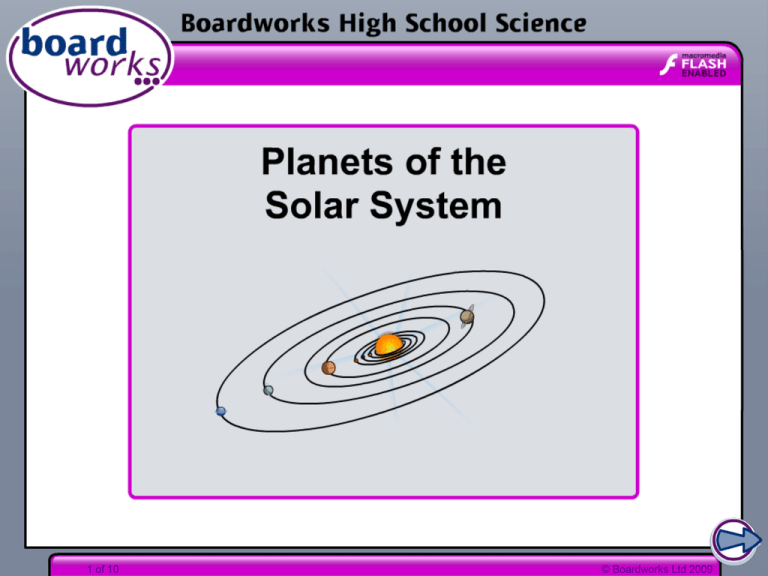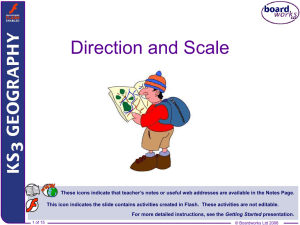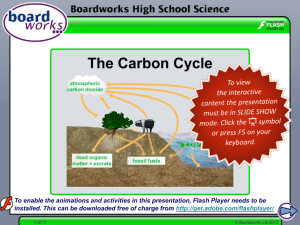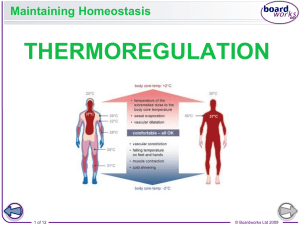The Solar System
advertisement

1 of 10 © Boardworks Ltd 2009 The Solar System Our solar system is made up of planets, moons and other celestial bodies orbiting the Sun. It is located near the Orion Arm of the Milky Way Galaxy. The Sun is just one of hundreds of billions of stars in our Galaxy alone. Our solar system 2 of 10 © Boardworks Ltd 2009 How was the Solar System formed? The Solar System was formed over 4.5 billion years ago when a nebula, a massive cloud of dust and gas, began to contract and spin. The force of the spinning shaped the cloud into a disk with a central cluster of matter. This cluster grew denser and hotter until nuclear fusion occurred and it became the Sun. While the Sun was still forming, gravity drew particles together to form smaller bodies in the spinning disk. When the Sun formed, its solar winds blew most lighter bodies away, eventually leaving what we recognize as our solar system. 3 of 10 © Boardworks Ltd 2009 The history of the solar system 4 of 10 © Boardworks Ltd 2009 How is a planet formed? 5 of 10 © Boardworks Ltd 2009 Terrestrial and jovian planets 6 of 10 © Boardworks Ltd 2009 How old is our solar system? Scientists can date rock samples by measuring the amount of natural radioactive isotopes in them. Over billions of years, these isotopes decay into other elements. By measuring the isotopes in the sample, scientists can determine when the rock was formed. This is called radiometric dating. 7 of 10 © Boardworks Ltd 2009 How old is our solar system? Earth’s tectonic activity means that the crust is constantly being renewed. In order to determine the age of our solar system, scientists must take their samples from rocks that have remained unchanged since the solar system began. Lunar rocks and meteorites fit this criteria perfectly. By dating lunar samples and fallen meteorites, scientists have learned a great deal about our solar system’s history. 8 of 10 © Boardworks Ltd 2009 Comparing planets 9 of 10 © Boardworks Ltd 2009 Stages of a solar system 10 of 10 © Boardworks Ltd 2009


![Direction_and_Scale[1]](http://s2.studylib.net/store/data/005432475_1-80ce3065f13008250a8cdec135db9846-300x300.png)








